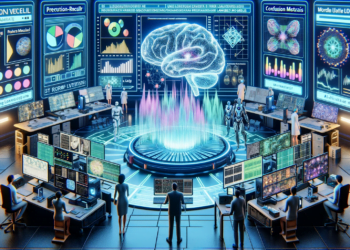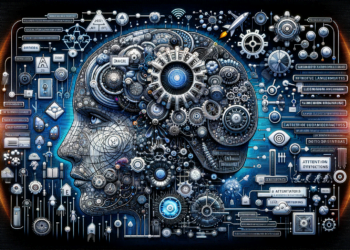Language models constitute the core of various contemporary applications in the field of artificial intelligence (AI), ranging from automated text generation and virtual assistants to natural language processing (NLP) for the understanding and analysis of large volumes of data. These models have been developed and refined over the decades, evolving from simple statistical-based approaches to complex algorithms utilizing deep learning techniques.
Theoretical Foundations of Language Models
The genesis of language models can be found in information theory and the quest for methods to model text sequences in a way that can predict the probability of a given sequence. Markov models, specifically hidden Markov models, laid the groundwork in the ability to handle sequentiality and immediate context. However, they lacked the depth needed to understand the intricacies of human language.
The advent of n-gram models brought a first layer of contextual understanding, based on predicting a word based on its n-1 predecessors. While powerful, these models also presented significant limitations, particularly in their ability to handle long-term dependencies and the unmanageable dimensionality when dealing with large vocabularies.
Advancement towards Deep Learning and Transformer Models
Technological and theoretical advancements led to the adoption of Recurrent Neural Network (RNN) architectures, which could theoretically handle variable-length temporal dependencies. LSTM (Long Short-Term Memory) units improved RNNs’ ability to remember long-term information, but they still struggled with extremely long sequences and faced intense computational challenges.
Transformer models, introduced by Vaswani et al. in 2017, represented a paradigm shift by dispensing with recurrence and focusing on global attention, enabling these models to weigh all words in a sequence simultaneously. This architecture not only significantly improved performance on NLP tasks but also reduced training times.
BERT and GPT: Two Divergent Paths
BERT (Bidirectional Encoder Representations from Transformers) and GPT (Generative Pre-trained Transformer) are two notable implementations that derive from the Transformer architecture. BERT utilizes a bidirectional attention mechanism that allows it to capture context in both directions (to the left and right of each word), resulting in exceptionally rich and deep word representations. On the other hand, GPT adopts a generative and unidirectional approach enabling the production of coherent and contextually appropriate text.
The key difference between BERT and GPT lies in their training strategies and applications. BERT is trained using a masked word prediction task that encourages a deep understanding of bidirectional context, making it especially suited for text classification tasks and reading comprehension. GPT, however, being generatively oriented, excels in tasks like text generation.
Practical Applications and Current Challenges
The practical applications of these models are vast, including automatic translation, summarization generation, and the design of chatbots and digital personal assistants. The efficacy of language models in these applications has been demonstrated in multiple case studies, highlighting their ability to generate relevant responses in real-time, allowing for the creation of more natural and efficient human interfaces.
Despite advancements, challenges persist, with one of the most significant being the tendency of these models to perpetuate and amplify biases present in training data. Moreover, model interpretability is often limited, complicating the understanding of their decision-making processes and the identification of errors.
Towards the Future: Innovations and Directions
Looking to the future, the trend is towards creating even more efficient models capable of handling language in an almost human manner. This includes improving bias detection and correction, developing methods that increase model decision interpretability, and reducing the data needed to train effective models through techniques such as reinforcement learning and transfer learning.
In summary, statistical and AI-derived language models continue to evolve, providing increasingly powerful tools for natural language processing and generation. As these tools become more advanced, there is also a growing need to manage them ethically and responsibly, ensuring they contribute positively to human and social development.






















